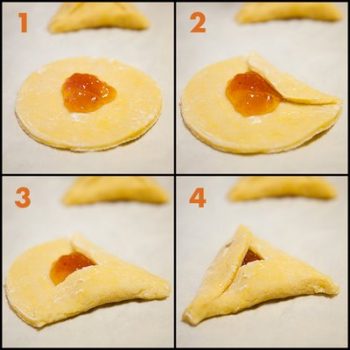Archive by Author
Recipe: The Hamantashen Cookie Posted by Sean Young on Feb 20, 2014
In three weeks is the celebration of Purim! And as always, Hamantashen cookies are always present. For those who do not know about the story of Purim, I wrote an article about it about two years ago. Click here to read it (it will open in a separate window). Now let’s take a look…
When in Israel, eat like an Israeli Posted by Sean Young on Feb 18, 2014
When it comes to food, Israelis are spoiled. They are accustomed to strong flavors and fresh ingredients. How spoiled are they? Well, McDonald’s was forced to change their burger recipe (and create a kosher Big Mac) to be accepted by the Israeli palate. Starbucks and Dunkin’ Donuts didn’t quite make it…. In Israel, as in…
Verbs in Action: Back to the Future? Posted by Sean Young on Feb 11, 2014
Conjugating a pa’al verb into the future tense is going to take a little bit of learning to do here. I’m going to focus on the root ס-ג-ר, which gives the idea of closing and show you how it’s done. Ready? In the future tense, there are four prefix letters before the root. They are…
Verbs in Action: Binyan Pa’al Posted by Sean Young on Jan 30, 2014
The binyan פָּעַל is the most basic and simplest to understand conjugation to learn. It does not contain any special identifying markers other than the root letters. In most פָּעַל conjugations, the stem consists of the sequence CoCeC – פּוֹעֵל. The vowels ‘o’ and ‘e’ are the stem vowels that help create most of the…
Verbs in Action: The Seven Binyanim Posted by Sean Young on Jan 27, 2014
Hebrew vocabulary is quite flexible when you think about it. This is because Hebrew words are based on roots consisting of 3 consonants; you may find some with 2 or 4 consonants, but you won’t find them very often. From these roots you can modify them by changing the vowels, or adding certain prefixes, suffixes…
A Look at Grammar: The Direct Object Posted by Sean Young on Jan 22, 2014
In this article, we’re going to look at a part of Hebrew grammar that beginning students often want to know. There’s a particle in Hebrew (אֵת) that isn’t translated into English. This particle indicates that a ‘direct object’ is ahead in that sentence. A direct object answers the ‘what’ or ‘whom’ in a sentence (for…
Using Facebook in Hebrew – The Sequel Posted by Sean Young on Jan 16, 2014
Have you been using your Facebook account in Hebrew? Has it been helping you with your Hebrew studies? Let me help you out with interacting in Hebrew as you read and write your posts. Here are some commonly used sentences and phrases that I’ve collected for you. Enjoy! Did your hear about… – שָׁמַעְתָּ/שָׁמַעְתְּ עַל……







